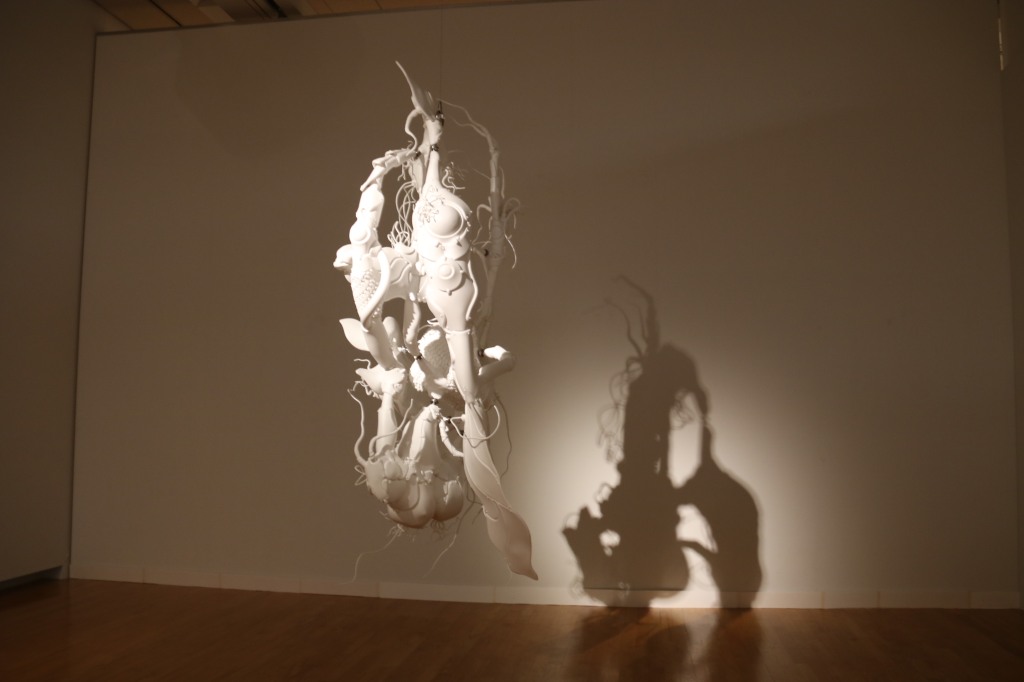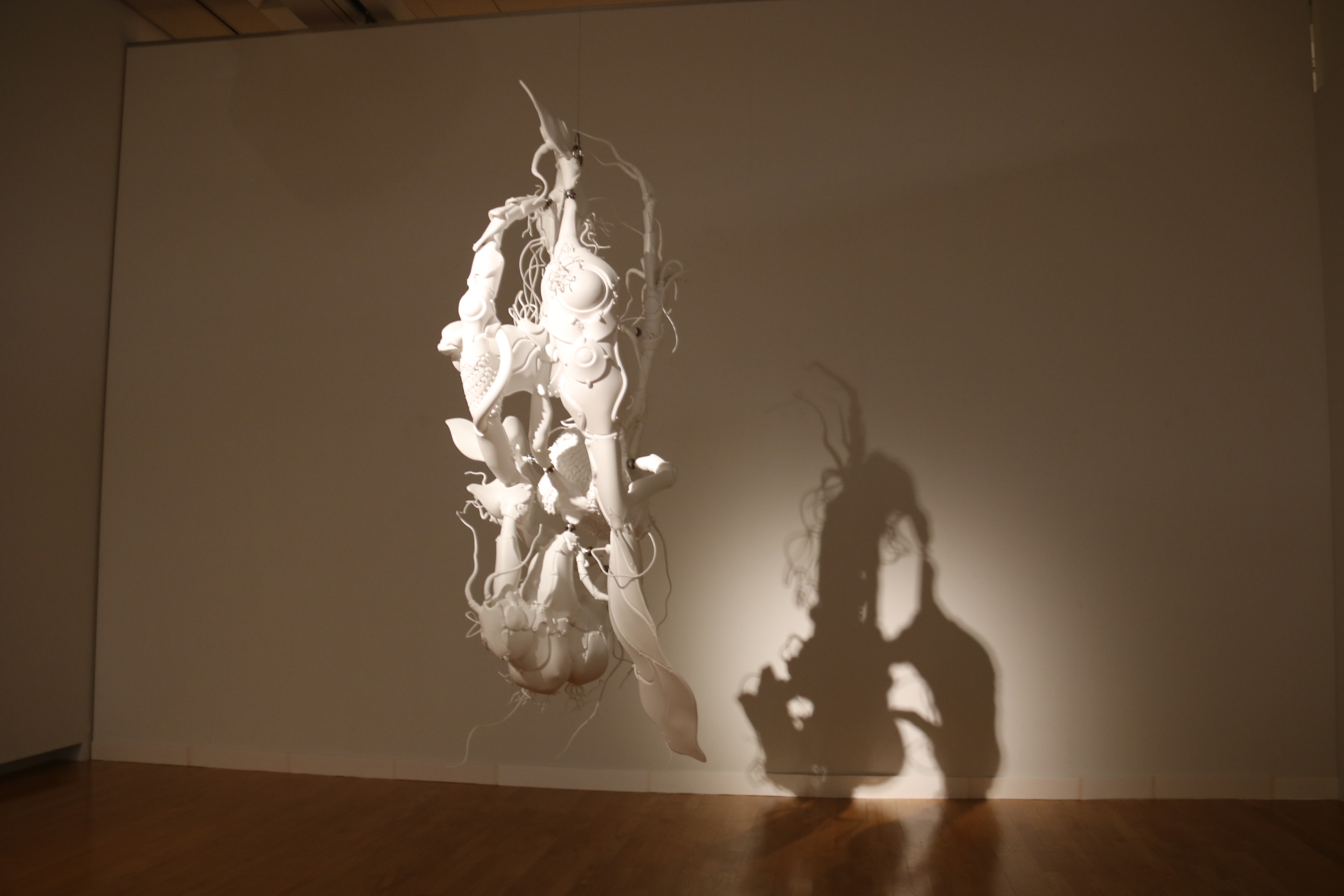I wrote this piece was for Fukuoka Asian Art Museum’s Facebook feed. It was posted on 20 July 2019. Images belong to the museum.

Lee Bul (Korea) “Chrysalis” 2000
“Chrysalis” by Korean artist Lee Bul is part of our permanent collection, hanging in our Asia Gallery. The white sculpture, which references both the dignity of ancient European sculpture and Korean porcelain, is a hybrid entity made up of animals, insects, plants and machines. It contrasts ideas of softness with hardness, fragility with strength.
When I look at this hanging sculpture I’m struck by how it’s gentle movements, affected by the gallery’s air conditioning, contrast to the solidity of the sculpture. Strands, which remind me of veins, spiral out of the piece from all angles, looking like a cross between rat-tails and telephone cords. The nuts and bolts that are incorporated into the sculpture are metamorphosed into an organic whole by the uniform and brilliant white. It reminds me simultaneously of car-parts, viscera, reptiles and insects.The name “Chrysalis” makes one think of a butterfly and provokes one to wonder what creature(s) this sculpture might generate. What do you see when you look at it?
Lee Bul was one of the first Korean artists to find themselves at the centre of the international art world and accordingly is a role model for subsequent generations of Korean artists. Since the early 1990s, her work has explored the meaning of the human form. Her work is consistently interested into metamorphosing the human body in order to question patriarchy and the role of women in society. These themes take form in cold, mechanical sculptures that are designed to suggest the ideals of a futuristic society.
Born in Yeongju, Gyeongsangbuk-do, South Korea, in 1964, Lee Bul is a popular contemporary sculpture and installation artist. She is part of a generation of Korean artists who made their debut in the late 1990.
Having studied sculpture at Hongik University, one of Korea’s most prestigious art schools, Lee and several other artists created the group MUSEUM. This revolutionary group of artists were referred to as enfants terribles. They led the next generation of Korean artists away from the traditions of Minjung art and monochrome painting that dominated the art scene in Korea.
Bul’s famous series of cyborg sculptures, created in 1997-2011 and shown at the Venice Biennale, are decapitated anthropomorphic forms missing their limbs that seem both anatomically amorphous and robotic. We can see the relationship of these famous works to “Chrysalis”, which has at its core a heart-like organ, densely covered with scale-like pieces and connected to all the other organ-like sections of the sculpture.
The idea of a cyborg, a hypothetical being with augmented superhuman abilities, transcends distinctions such as gender, race, and class. The artist has stated that the cyborg is a trope for “our fear and fascination with the uncategorizable, the uncanny.”
Lee Bul’s work has been exhibited all over the world and she’s received international recognition and acclaim for her work.
